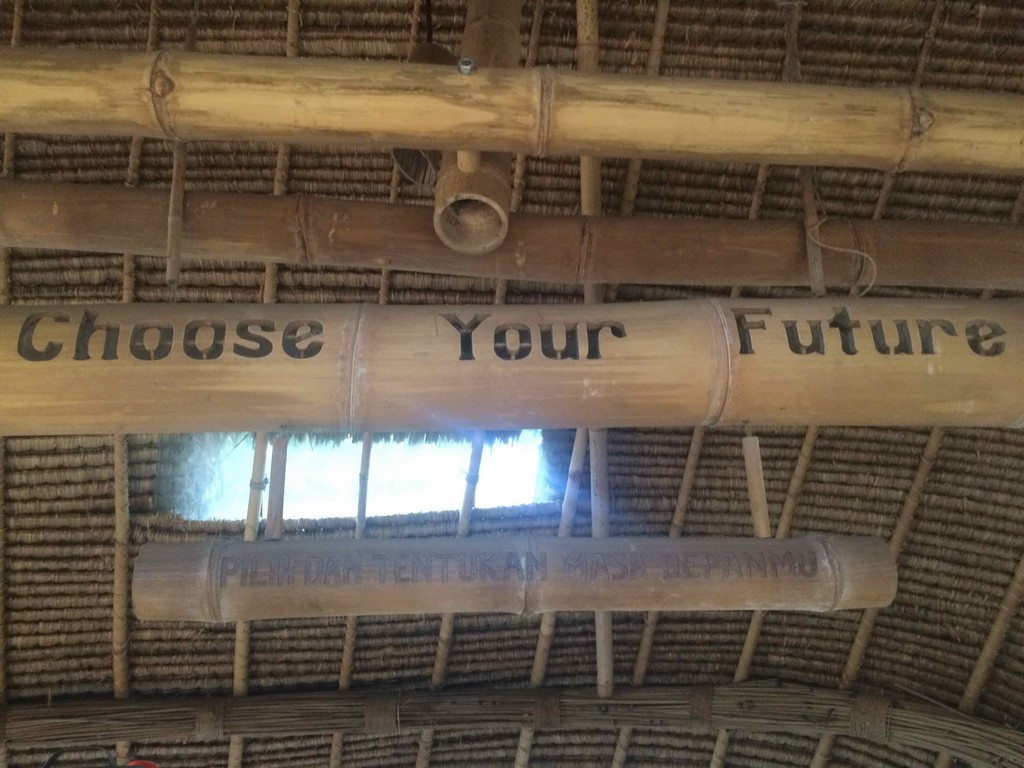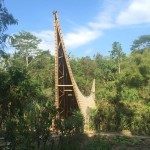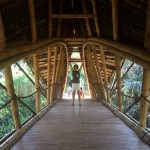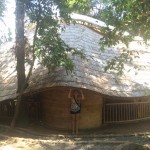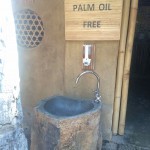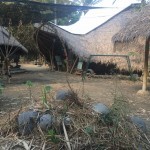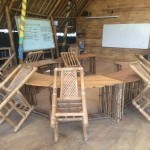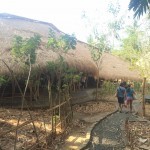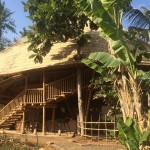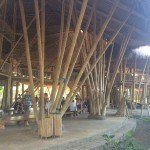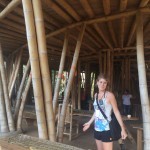GREEN SCHOOL in Bali
During our trip to Bali we visited this amazing school immersed in the jungle near Ubud, close to the river Ayung and to many paddy fields.
The sound of a gong announces the beginning of the lessons which take place in bamboo pavilions with no walls.
Desks, chairs and whiteboards are made of bamboo and all around it’s just jungle!
The noise of the river is continuous, the birds don’t stop singing and one hen with two chicks crosses the ground floor of the amphitheatre while some attendants gather leaves of banana trees that will be used to serve meals composed of local organic and wholemeal food.
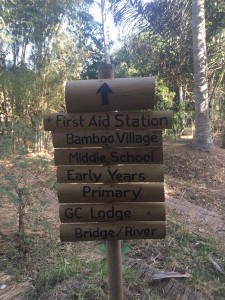
Bamboo signs guide us to the different educational areas that have bamboo pavilions with green roofs full of grass, ecological islands and toilets made of…again, bamboo! The same material is used to build the harps that the children play as well as the fences of the fields where they practice sports.
Walking around the Green School as happy as little Smurfs in their village, we reached river Ayung and the bridge Kul-Kul, the first structure to be built in 2007. The bridge is 22 meters long and nearby we saw children having fun while bathing and diving in the water…we wondered if it was recreation time yet.
The concave and convex curves of the bridge have decoration purposes, but they also follow the natural tendency of bamboo to bend and twist.
Why employing bamboo? The answer is simple: because locally it’s a highly available resource and it’s completely recyclable. Bamboo trees grow very fast and within 3 years they renovate completely; they prevent soil erosion and capture 4 times more CO2 than a young forest, producing at the same time 30% more oxygen. Bamboo is more resistant than oak wood, lighter than reinforced concrete and it’s extremely versatile, from building structures to textiles for clothes. In conclusion bamboo it’s definitely a sustainable material, but will we be able to find something similar in Europe?
Getting back to the Green School, definitely an example of how a school should be and how we can live in harmony with the environment working with it, not against it.
Here students receive a proper education especially focused on supporting a change in the way we are managing our planet.
This is the vision that inspired Cynthia, an American woman and her partner, the Canadian designer John Hardy, who have been living in Bali for more that 30 years now. In 2007, after leaving their profitable jewellery business, they founded this school to create an alternative to the international schools of Bali which still stick to the old concept of an educational environment confined within four walls. They wanted to create a real stimulating environment that went beyond structural, conceptual and physical boundaries of many traditional schools… and that’s what they accomplished!
The Green School is inspired to the educational model of Rudolf Steiner and the concept of experiential learning. The school aims to educate future leaders in the field of sustainability.
Its curriculum combines the academic strictness of classic institutes with many hours of experiential learning within a “green” curriculum and a “creative arts” curriculum that transform the school in a living laboratory where students learn woodworking bamboo, cultivating rice and other vegetables, river and jungle ecology and protecting endangered species.
Besides being taught fundamentals subjects such as English, math and science, “green” students will also have the chance to pursue any kind of further studies or career.
And for those who think that learning in a wall-free environment may lead to distraction problems, Cynthia tells that within a week dyslexic children that arrive here look more focused and more at ease in the “beautiful chaos of nature”.
This year more than 200 children from different parts of the world enrolled the School along with a 20% of Balinese students that can attend for free. This means contributing to a global vision of a world in which many different cultures come into contact.
The rules behind every decision taken are very simple:
- Be local;
- Let your environment to be your guide;
- Think about how your grandchildren will be affected by your actions;
The 8 guiding values are: Integrity, Responsibility, Empathy, Sustainability, Peace, Equity, Community, Trust.
Education goes from elementary school to the first two years of high school.
It’s an incredible, pioneering project of sustainability in the field of education as well as in green building. Visiting the Green School means entering in an aesthetic world our eyes are not used to look at; even the smallest detail is as important as the whole architecture and everything is a part of the surrounding environment, not a separated one.
As if nature itself created it… and it’s actually like this because man is nature, but they never taught us at school!
Newsletter
ARGOMENTI
- Activities (8)
- Attività (10)
- Attrattive (16)
- Cosa fare (22)
- Farm products (4)
- Fattoria dell'autosufficienza (62)
- Fattoria dell'autosufficienza (40)
- Fauna (8)
- Flora (5)
- I nostri modelli (15)
- Istruzioni per viaggiare (2)
- News (63)
- News (97)
- Our models (14)
- Permacultura (30)
- Permaculture (23)
- Prodotti della fattoria (4)
- Senza categoria (2)
- Senza categoria (4)
- Things to do (22)
- Tourist attractions (15)
